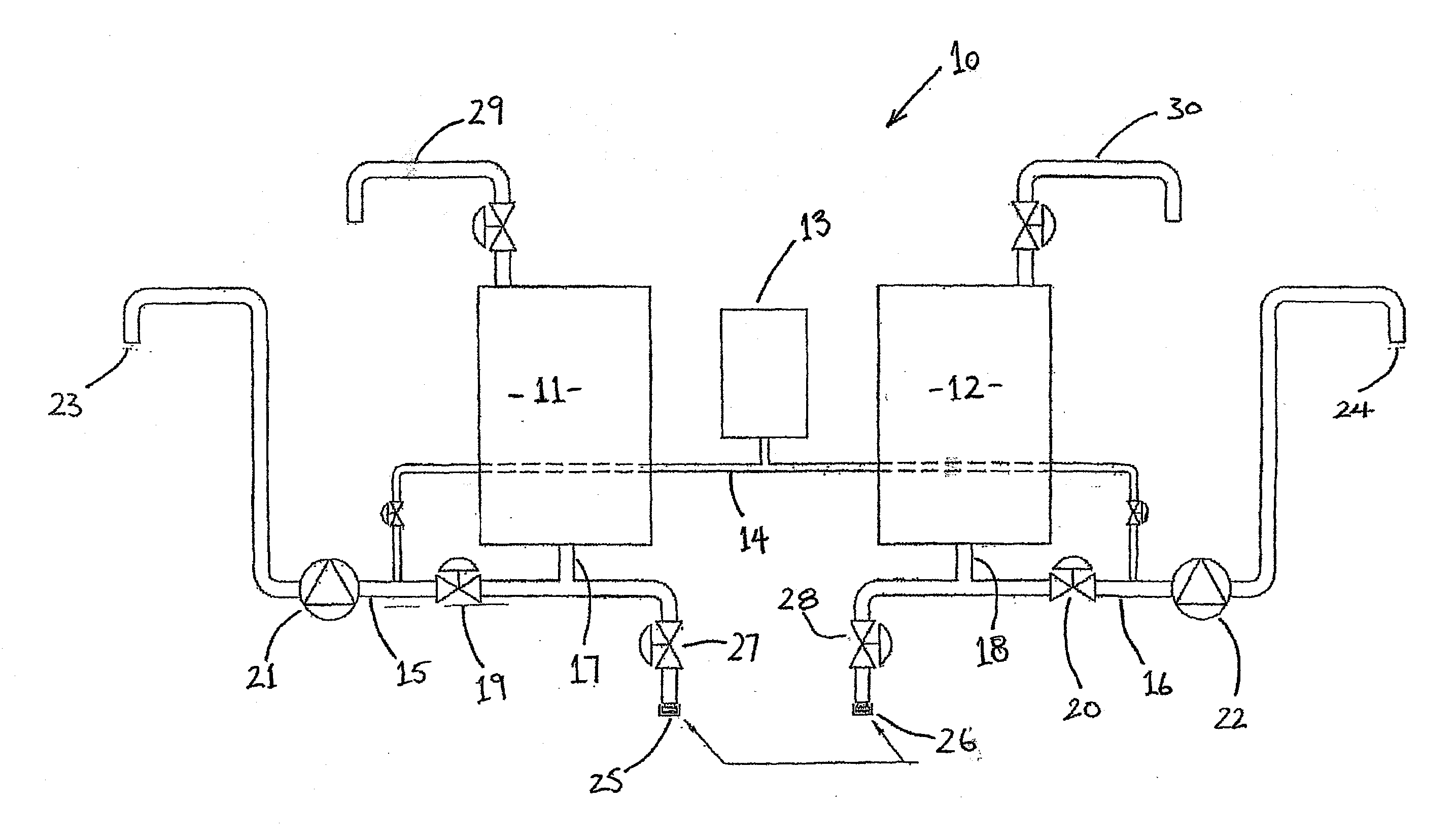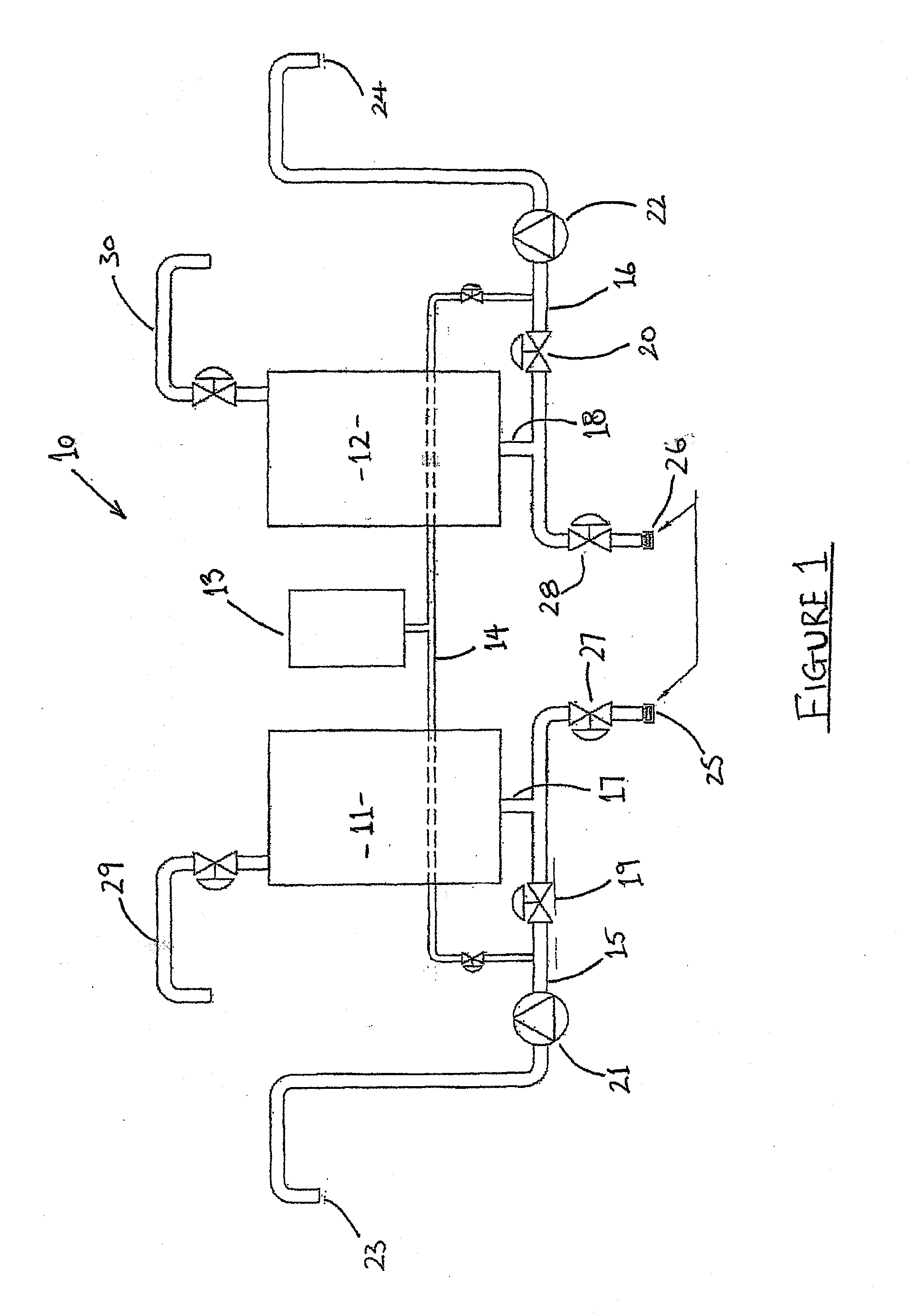Dry Mix Cement Composition, Methods and Systems Involving Same
a technology of dry mix cement and composition, applied in cement production, solid waste management, ingredients proportioning apparatus, etc., can solve the problems of difficult control in practice, poor workability, difficult to adjust, etc., to improve the polymerisation, increase the setting time, and reduce gas and water permeability
- Summary
- Abstract
- Description
- Claims
- Application Information
AI Technical Summary
Benefits of technology
Problems solved by technology
Method used
Image
Examples
example 1
[0095]The polymerisation aid: 1 kg potash feldspar (67.1% w / w SiO2, 17.6% Al2O3, 3.16% Na2O, 10.6% K2O, 0.18% CaO and 0.21% Fe2O3) of 25 microns and 600 g sodium hydroxide of 100 microns are dry mixed evenly and calcined in a furnace at 650° C. for 2 h at a temperature increase rate of 10° C. / min. The formed matte is crushed in a ring mill to an average particle size of less than 25 microns. The alkaline multi-phase aluminosilicate powder is used as a polymerisation aid.
[0096]One part dry mix (mass percentage): 5% polymerisation aid, 47.5% granulated slag (a glassy calcium aluminosilicate material of 32.49% SiO2, 14.39% Al2O3, 0.27% Na2O, 0.48% K2O, 42.04% CaO, 7.08% MgO and 0.30% Fe2O3, an average size of less than 25 microns) and 47.5% Gladstone fly ash (Pozzolanic Enterprises Pty. Ltd., Queensland, Australia, 50% less than 8.47 μm and 1% greater than 110 μm in size, a composition of 46.2% SiO2, 30.3% Al2O3, 0.27% Na2O, 0.56% K2O, 4.31% CaO, 1.52% MgO, 1.66% TiO2 and 12.6% Fe2O3)....
example 2
[0100]The polymerisation aid: 1 kg potash feldspar (67.1% w / w SiO2, 17.6% Al2O3, 3.16% Na2O, 10.6% K2O, 0.18% CaO and 0.21% Fe2O3) of 25 microns and 600 g sodium hydroxide of 100 microns are dry mixed evenly and calcined in a furnace at 650° C. for 2 h at a temperature increase rate of 10° C. / min. The formed matte is crushed in a ring mill to an average particle size of less than 25 microns. The alkaline multi-phase aluminosilicate powder is used as a polymerisation aid.
[0101]One part dry mix (mass percentage): 4% polymerisation aid, 8.5% Portland cement (21.12% SiO2, 4.39% Al2O3, 0.21% Na2O, 0.48% K2O, 0.87% SO3, 65.30% CaO, 1.14% MgO and 3.38% Fe2O3, an average size of less than 105 microns), 43.75% granulated slag (a glassy calcium aluminosilicate material of 32.49% SiO2, 14.39% Al2O3, 0.27% Na2O, 0.48% K2O, 42.04% CaO, 7.08% MgO and 0.30% Fe2O3, an average size of less than 25 microns) and 43.75% Gladstone fly ash (Pozzolanic Enterprises Pty. Ltd., Queensland, Australia, 50% les...
example 3
[0104]The polymerisation aid: 1 kg potash feldspar (67.1% w / w SiO2, 17.6% Al2O3, 3.16% Na2O, 10.6% K2O, 0.18% CaO and 0.21% Fe2O3) of 25 microns and 600 g sodium hydroxide of 100 microns are dry mixed evenly and calcined in a furnace at 650° C. for 2 h at a temperature increase rate of 110° C. / min. The formed matte is crushed in a ring mill to an average particle size of less than 25 microns. The alkaline multi-phase aluminosilicate powder is used as a polymerisation aid.
[0105]One part dry mix (mass percentage): 4% polymerisation aid, 2.0% Ca(OH)2, 28.2% granulated slag (a glassy calcium aluminosilicate material of 32.49% SiO2, 14.39% Al2O3, 0.27% Na2O, 0.48% K2O, 42.04% CaO, 7.08% MgO and 0.30% Fe2O3, an average size of less than 25 microns) and 65.8% Gladstone fly ash (Pozzolanic Enterprises Pty. Ltd., Queensland, Australia, 50% less than 8.47 μm and 1% greater than 110 μm in size, a composition of 46.2% SiO2, 30.3% Al2O3, 0.27% Na2O, 0.56% K2O, 4.31% CaO, 1.52% MgO, 1.66% TiO2 an...
PUM
| Property | Measurement | Unit |
|---|---|---|
| Fraction | aaaaa | aaaaa |
| Fraction | aaaaa | aaaaa |
| Fraction | aaaaa | aaaaa |
Abstract
Description
Claims
Application Information
 Login to View More
Login to View More - R&D
- Intellectual Property
- Life Sciences
- Materials
- Tech Scout
- Unparalleled Data Quality
- Higher Quality Content
- 60% Fewer Hallucinations
Browse by: Latest US Patents, China's latest patents, Technical Efficacy Thesaurus, Application Domain, Technology Topic, Popular Technical Reports.
© 2025 PatSnap. All rights reserved.Legal|Privacy policy|Modern Slavery Act Transparency Statement|Sitemap|About US| Contact US: help@patsnap.com


